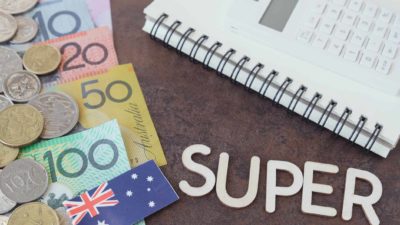Our retirement years are supposed to be bliss-filled and relaxing, perhaps spent indulging in long walks on the beach and gazing at sunsets from a hammock. Financial headaches and agonising over funding a comfortable retirement, however, are probably not part of most people's retirement dreams.
Yet that's what the investing process can bring to the table. After all, losing a primary, active source of income that has sustained one over a decades-long working career is a big change. And one that can spark a lot of mental and financial stress, especially if you're into picking individual shares as an investor.
After all, one wrong call can be seriously detrimental to your golden years' nest egg, with no active source of income to pick up the slack.
Yet it doesn't have to be this way. I think investing in retirement can be relatively stress-free. All you have to do is pick passive, bottom-drawer investments that allow no room for human error.
Yes, the stock market can be, and is, volatile. Volatility can be particularly disconcerting for investors who have already retired.
But history tells us that the S&P/ASX 200 Index (ASX: XJO) goes up far more often than it goes down. It also tells us that the ASX 200 has never failed to exceed a previous all-time high.
It's these facts that retirees should keep at the forefront of their minds when building a retirement portfolio.
Using index funds to build a comfortable retirement
So I think the best way to build out such a portfolio is by using index funds. Index funds track entire markets, and are a great alternative to picking individual shares yourself.
For example, an ASX 200 index fund like the iShares Core S&P/ASX 200 ETF (ASX: IOZ) holds 200 of the largest shares on the ASX, all in one investment. That's everything from the big four banks to the likes of BHP Group Ltd (ASX: BHP), Telstra Group Ltd (ASX: TLS), Woolworths Group Ltd (ASX: WOW) and Harvey Norman Holdings Limited (ASX: HVN).
Because an index fund like IOZ holds so many shares, the risks of holding each individual company are highly diluted. This means that, unlike an individual share, the risk of losing all of your capital in one investment is almost zero. The entire Australian economy would have to completely implode for this to happen. If that indeed does come to pass, well, we're all up the proverbial creek with no paddles anyway.
Thus, if I were retiring tomorrow, I would certainly use an ASX index fund like IOZ as the foundation of my retirement portfolio. For one, ASX 200 index funds returned an average of around 7.3% per annum over the past ten years (in IOZ's case anyway).
But they also give investors significant passive income in the form of dividends on the side, as well as a generous stream of franking credits. To illustrate, the iShares ASX 200 ETF currently has a trailing dividend distribution yield of 4.03%.
Diversifying your nest egg
Personally, I would be happy with having at least 50% of my retirement nest egg in an ASX 200 exchange-traded fund (ETF), or similar investment. A fund like IOZ offers both capital growth potential and generous and franked dividend income, if history is anything to go by.
But I would also supplement this retirement portfolio foundation with other ASX ETFs too. Another option might be a dividend-focused ETF, such as the Vanguard Australian Shares High Yield ETF (ASX: VHY). This fund holds a smaller portfolio of ASX shares but prioritises large, fully-franked income payers.
I would also think about adding some international exposure to my retirement portfolio. International shares typically offer less income potential than ASX shares, and you can forget about franking. But they more than make up for this with their capital growth potential.
To illustrate, an American-focused index fund like the iShares S&P 500 ETF (ASX: IVV) offers exposure to some of the world's best companies, including Apple, Google-owner Alphabet, Mastercard, Coca-Cola and McDonald's.
Why not add stakes in names like those in your nest egg?
So all in all, I think index funds can really take much of the headache out of planning for a comfortable retirement.
If you're great at stock picking and want to continue your successful investing track record in retirement, then don't listen to me. But for most retirees who just want to forget about share market volatility and stick with bottom-drawer, passive investing, I think the above approach will suit you down to the ground.








